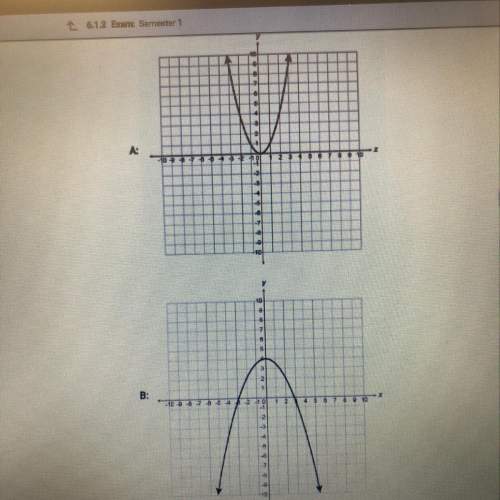Given: f = {(0, 1), (2, 4), (4, 6), (6, 8)} and g = {(2, 5), (4, 7), (5, 8), (6, 9), (7, 5)}
<...

Mathematics, 26.10.2019 17:43 robbylynnbonner
Given: f = {(0, 1), (2, 4), (4, 6), (6, 8)} and g = {(2, 5), (4, 7), (5, 8), (6, 9), (7, 5)}
(f + g) (2) =
given: f = {(0, 1), (2, 4), (4, 6), (6, 8)} and g = {(2, 5), (4, 7), (5, 8), (6, 9), (7, 5)}(f - g) (6) =
given: f = {(0, 1), (2, 4), (4, 6), (6, 8)} and g = {(2, 5), (4, 7), (5, 8), (6, 9), (7, 5)}(f g) (2) =

Answers: 1


Another question on Mathematics

Mathematics, 21.06.2019 13:30
Linet passes through (4.5) and is perpendicular to the line shown on the condirate grid.what is the equation of line t in standard form?
Answers: 1

Mathematics, 21.06.2019 20:00
0if x and y vary inversely and y=6 as x=7, what is the constant of variation?
Answers: 1

Mathematics, 22.06.2019 02:30
In 1995 america online had about 3000000 users over the next decade users are expected to increase from a few million to the tens of millions suppose the number of users increased by 150% by the year 2000 how many users will there be in the year 2000
Answers: 3

Mathematics, 22.06.2019 03:30
Which two properties of equality could zoe use to finish solving for x? the equation is 3x - 4 = -10 for x so a either the addition or subtraction property of equalityb ether the multiplication or division property of equality c ether the addition or division property of equality d ether the subtraction or division property of equality just a simple a b c or d plz.
Answers: 2
You know the right answer?
Questions


English, 16.11.2020 06:50

English, 16.11.2020 06:50

Spanish, 16.11.2020 06:50

Mathematics, 16.11.2020 06:50

Chemistry, 16.11.2020 06:50

Biology, 16.11.2020 06:50

Biology, 16.11.2020 06:50

History, 16.11.2020 06:50


Mathematics, 16.11.2020 06:50

Business, 16.11.2020 06:50

Mathematics, 16.11.2020 06:50



Mathematics, 16.11.2020 06:50


Chemistry, 16.11.2020 06:50






